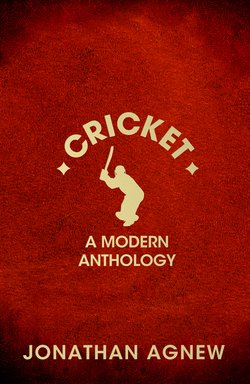Читать книгу Cricket: A Modern Anthology - Jonathan Agnew, Jonathan Agnew - Страница 9
Preface
ОглавлениеCricket, more than any other sport, has always lent itself to expressive colourful writing alongside intelligent debate – in the sports pages of our daily newspapers, over the broadcasting airwaves, through the pages of Wisden dating back to 1864 or, indeed, around the bar in the village pub. Such is the depth and complexity of cricket – spanning its history, politics and characters – that a single, universal view is extremely rare. Even such momentous events as Bodyline, the D’Oliveira affair and World Series Cricket were all strenuously argued about, usually from diametrically opposed positions.
The beauty of assembling an anthology such as this is that those opinions, assessments and descriptions can all be brought together in one place. So this is where we are able to read about and compare the lifestyles and characters of two of England’s finest fast bowlers, Harold Larwood and Fred Trueman; savour the deeds of opening batsmen Jack Hobbs and my old friend Geoffrey Boycott; consider first-hand reflections on Bodyline by Sir Donald Bradman; and enjoy a graphic description of the first tied Test between Australia and West Indies by Richie Benaud, who lost his wicket to the second ball of that frantic final over delivered by Wes Hall.
To be given the opportunity to sit, read and select extracts from the works of some of cricket’s finest writers and players has been a most rewarding experience. The modern game is so time-consuming – with matches coming thick and fast and increasingly demanding deadlines to hit – that it is difficult sometimes to sit back, take a breath and reflect properly on what has just taken place. However, a book provides the opportunity to include additional information that was not available at the time and that vital element of context, which can only properly be given with the passing of the years. I have frequently found myself surprised as new light is shed on a subject I thought I knew reasonably well. For the first time, for instance, we learn that Basil D’Oliveira was the selectors’ third-choice replacement for the injured Tom Cartwright in 1968; he was definitely not rushed into the squad for that ill-fated tour as the South African government believed.
I am delighted that this book has offered me the chance to explore, and now share, some of the most joyful, illuminating and elegant writing ever produced about cricket – without doubt the best sport in the world.
Jonathan Agnew, March 2013
